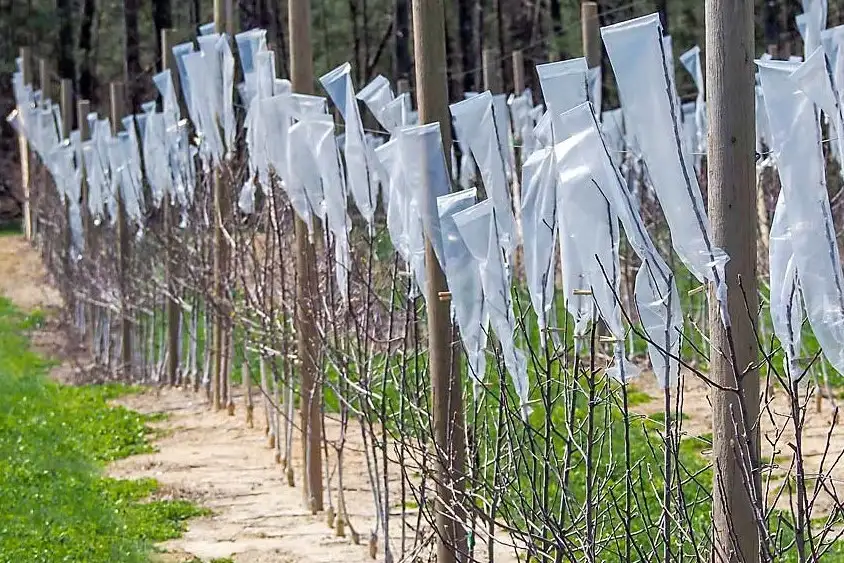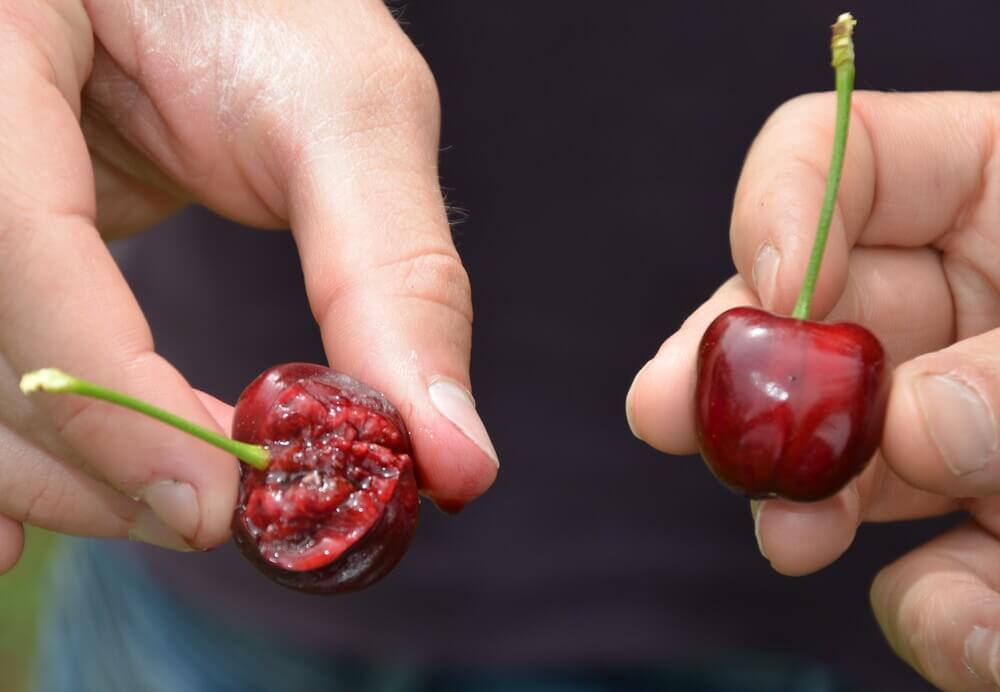Intensification of the cherry orchard is achieved by increasing the number of plants in the rows and, in certain cases, also by reducing the inter-row spacing. This is the theoretical explanation, but when considering cherry trees, which are often characterised by excessive vigour, the picture becomes more complicated.
Potential strategies to reduce vigour and promote floral induction include modifying the duration and intensity of pruning. However, tree response may vary depending on cultivar, soil and climatic conditions.
In southern Ukraine, characterised by arid areas, a study was conducted to determine the impact of different pruning techniques and conditions on young sweet cherry trees with the aim of adapting cultivation techniques in intensive cultivation under these climatic conditions.
The varieties used were 'Krupnoplidna' and 'Melitopolska Chorna', both grafted onto Colt rootstock. These varieties are late maturing but characterised by two different production habitus.
The former tends to form a round crown, with a good formation of shoots especially in the juvenile phase. The second, on the other hand, produces fewer shoots, resulting in a more upright tree shape. The results revealed that compared to winter pruning, pruning in late summer reduced trunk and canopy growth by 11-22% in 'Krupnoplidna' but increased the number of flowers per tree by 1.4-1.7 times on both cultivars.
Low severity pruning reduced the length of one-year-old shoots by 9-25% and increased flower production by 1.5-2.5 times compared to more aggressive pruning. The impact of pruning treatments on tree vitality was particularly evident in the initial and post application years. The results of this research are in line with previous experiments on cherry trees, which documented an increase in yield with little or no pruning.
It should be noted, however, that when trees reach full fruiting, light pruning negatively affects fruit size and, consequently, yield marketability; therefore, more aggressive pruning may be necessary to maintain fruit quality and effectively manage the crop load.
The greater impact of cultivar genotype on flower quantity regardless of any pruning treatment further emphasises the indispensability of a cultivar-based strategy for the successful implementation of cultivation techniques in the cherry tree.
The trees' response to branch cut length showed greater homogeneity among the cultivars examined. Overall, it was observed that both short pruned branches (with only one or two buds) and long pruned branches (approx. 20 cm) consistently generated new shoots in the following season, with no significant effect of branch length on average shoot length.
The percentage of dead shoots increased with tree age, mainly in the short pruned branches, but remained negligible. A further investigation, involving the grafting of the same cultivars onto a dwarfing rootstock, suggests that by removing a significant proportion of the current year's shoots, the percentage of dead shoots (50-70%) significantly increases.
The results obtained from the test regarding the performance of differently pruned branches (short vs. long) vary depending on the position of the shoot within the tree, suggesting the need for further studies. In conclusion, it can be stated that young cherry trees pruned in late summer with reduced pruning severity suffer a decline in vitality, most evident in the reduction of shoot length at one year of age.
However, this decline has a positive impact on flower induction, leading to increased earliness. The impact of pruning treatments on tree vitality was particularly evident in the initial and subsequent years of their application. By cutting half-year old wood, compared to thinning cuts, more of the tree's growth points can be preserved and new shoots develop more consistently in the desired crown positions.
Source: Bondarenko, P., Alekseeva, O., Senin, V., & Kondratenko, P. (2023). Pruning terms and techniques affect vigour and flower formation of Ukrainian sweet cherry cultivars. Advances in Horticultural Science, 37(3), 271–280. https://doi.org/10.36253/ahsc-13827.
Image: Agrimeca
Melissa Venturi
University of Bologna (IT)
Cherry Times - Tutti i diritti riservati












